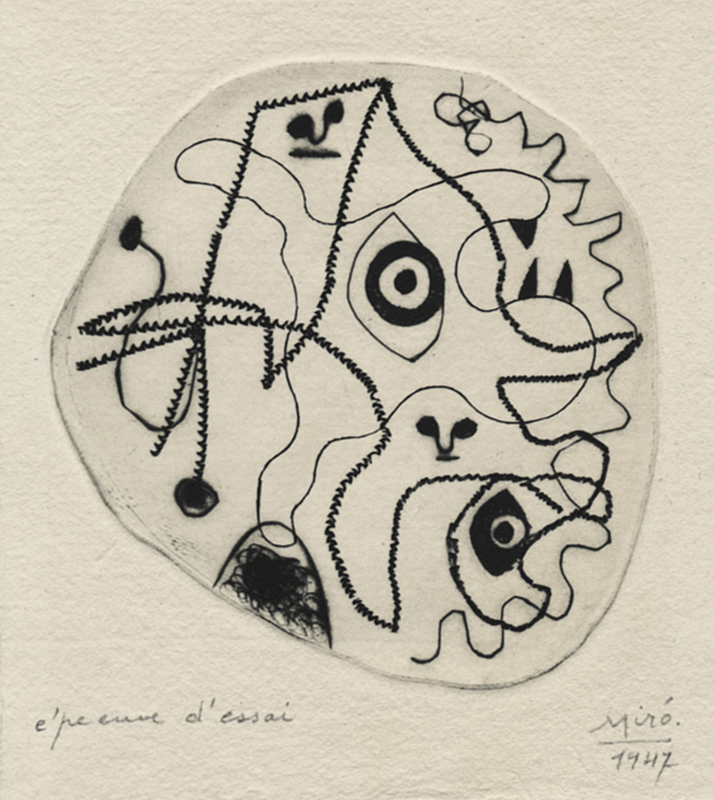
19th, 20th & 21st Century Fine Prints
707-546-7352 · fax 707-546-7924 · web: www.annexgalleries.com · email: artannex@aol.com
L'Antitete III, plate three of "Le Desesperanto" by Joan Miro

L'Antitete III, plate three of "Le Desesperanto"
Joan Miro
L'Antitete III, plate three of "Le Desesperanto"
Joan Miro
1893 - 1983 (biography)As published, this etching (with additional pochoir color in the margins) is on page 51 of Volume III, L'Antitête, the three-volume anthology by poet Tristan Tzara (Romanian/French, 1893 - 1983). The third volume, Le Désespéranto (The Despairing One), was illustrated with a set of eight etchings by Miro from shaped plates. This illustrated version of the anthology was published in 1949 by Bordas in Paris.
According to William Jeffett in The Burlington Magazine article "L'Antitete: The Book as Object in the Collaboration of Tristan Tzara and Joan Miro" (Februrary 1993, Vol. 135, No. 1075, Burlington Magazine Publications, Ltd.), L'Antitete was first published in 1933 and contained writings from 1916 - when Tzara helped to form the Dada movement in Zurich - to 1932, when he had become a Surrealist. Tzara had written to Miro in June of 1946 expressing a desire to have the artist illustrate a second edition of this work with the aim of creating a luxury art book. Miro, having taken a commission by Hilton Hotels to create a large-scale mural in the US, agreed, and developed the plates with Stanley William Hayter at Atelier 17 in New York while Tzara remained in France, acting as liason between Miro and the Paris-based publisher Bordas and master printer Roger Lacouriere.
Miro wrote frequently to Tzara about his process in creating images to complement the poet's work. Eventually, the images would include color pochoir printed by Lacouriere, but when this proof impression was made, Miro and Hayter were focusing on the feel of the composition through experimentation with automatic line, new tools, and a shaped plate.
